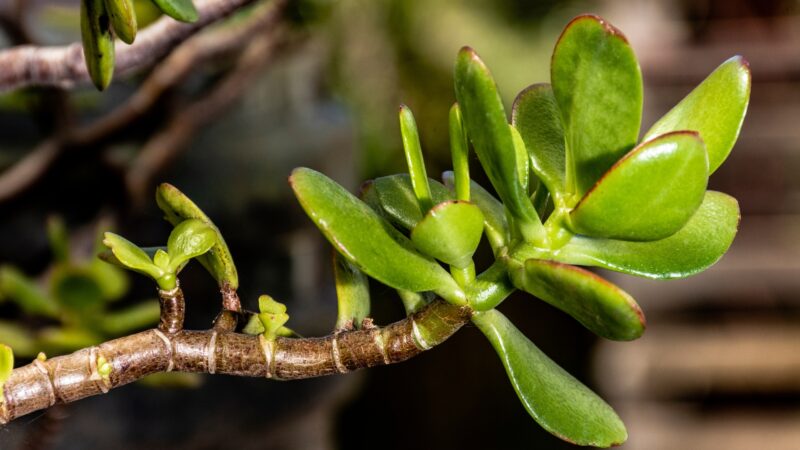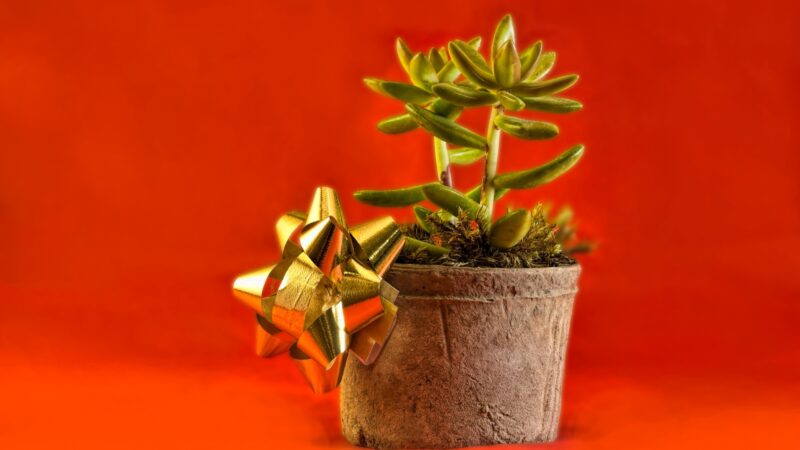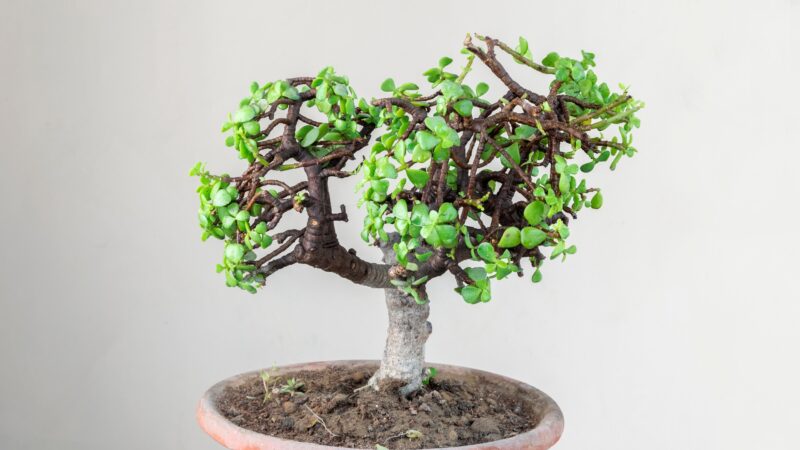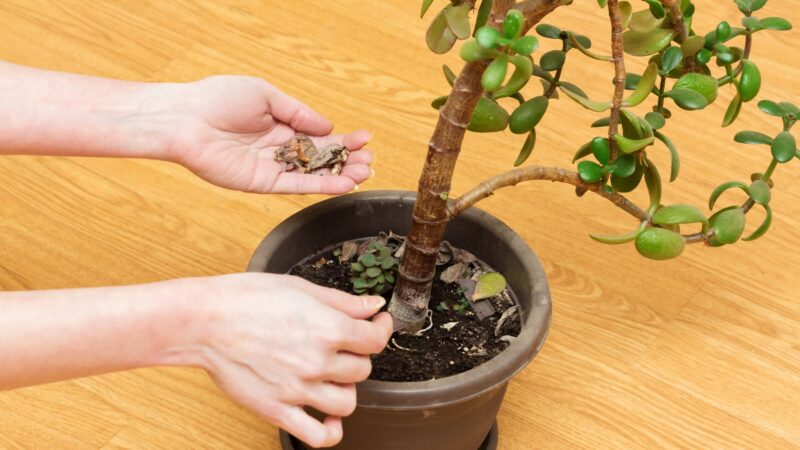Jade plants are commonly grown as indoor succulents due to their attractive leaves and how easy it is to propagate them. They are also relatively resilient, which means they can thrive under virtually poor conditions and can live longer life than most houseplants.
To propagate a jade plant, you can do so using a sharp knife or cutting tool to select stem or leaf cuttings. When rooting in the soil, the cutting must be dipped in rooting hormone before being inserted deep into the potting mix. When rooting in water, clean and unchlorinated water must be used and then changed regularly.
This article discusses everything you need to know about propagating a jade plant, how to take care of it, and other relevant information. Read further this article for more!
What Is a Jade Plant?

The Jade plant (Crassula ovata), also referred to as the Money Plant, is a hardy houseplant belonging to the Crassulaceae family, which is composed of flowering plants with succulent leaves. It is native to the valley thicket vegetation of South Africa and Mozambique but has become quite popular worldwide.
Resembling a miniature tree, this plant has fleshy, oval, or round-shaped leaves that have a bluish-gray, dark green, or red-edged color, depending on the cultivar.
Its stems are trunk like due to their thickness, and it has brown branches. Star-shaped pink or white flowers appear on mature plants during the winter season.
In mild climates, they’re used as a landscape, specimen, or hedge plant. They have also been used as indoor ornamentals in other areas for over 100 years.
Can Jade Plants Be Propagated?

Jade plants can be propagated. It is fairly easy to do so through either stem or leaf cuttings.
In fact, it is recommended to propagate them through cuttings instead of by planting seeds since the latter usually has quality or germination issues. Cuttings can be taken and propagated at any season of the year too.
How to Propagate a Jade Plant? | Stem Method

Use a sharp blade to reduce the risk of injuring the parent plant. The knife or cutting tool must be dipped in rubbing alcohol or a mixture of nine parts water to one part bleach to avoid transmitting diseases from potentially infected plants to healthy ones.
Cut a 2- to 6-inch piece of stem, including its terminal bud found at the tip of a shoot, just below a node. Remove any lower leaves that would possibly touch or be located below the medium. Leave at least two bare nodes.
Rooting in Soil
Select a clean container that’s an inch bigger than the parent plant’s diameter. For example, if your jade plant is 5 inches wide, the new pot should be 6 inches in diameter. Fill it with a potting mix-up until an inch below the top of the container.
Dip the cuttings into the rooting hormone to promote optimum growth, and tap the end of the cutting to remove any excess hormone. Using a pot label or pencil, make a hole in the medium, then insert the bare part of the cuttings directly and deeply into the soil mix. Make sure it can support itself.
After planting, water thoroughly and place in a warm area. Depending on geographical location, you can choose to enclose the pot using a plastic bag with stakes around it, so it doesn’t touch the plant directly. Once the roots have started sprouting, remove the plastic.
Rooting in Water
Place the cuttings into a vase, jar, or glass of clean water. Avoid using tap water since it may contain chlorine or fluoride. If you only have tap water available, make sure to sit it out overnight first before using it to let the chlorine or fluoride evaporate. You can also use reverse-osmosis water, rainwater, and demineralized water.
Simply place the cuttings into the container without adding any more rooting hormone, then place it in a location that allows it to receive bright but indirect sunlight (i.e., curtain-filtered sunlight).
Change the water once or twice a week or when it starts to look cloudy. Once the roots have grown to at least two inches, repot the plant in a small, well-draining container.
How to Propagate a Jade Plant? | Leaf Method

Jade plants are propagated through the leaf-petiole cutting method. As the name suggests, this consists of cutting off a leaf and its stalk or petiole. Remove a firm and healthy leaf from the plant using a sharp cutting tool, leaving about 1 to 1.5 inches of the petiole still attached to the leaf blade.
Rooting in Soil
After selecting the cuttings, let it callus for an hour before plunging the end of the petiole in a rooting hormone. Before planting, fill a container with one of the following rooting media: vermiculite, coarse sand, pumice, compost, or a 50:50 ratio of sphagnum peat moss and perlite, then moisten.
At a 45° angle, insert the petiole of each of the leaf cuttings into the medium of your preference, water thoroughly, then allow the excess to drain. Cover the jade cuttings using a clear plastic bag, waxed paper, or aluminum foil, and make sure it is fastened to the pot using a rubber band or tape. Lastly, place the container in a brightly lit area.
Roots will begin forming around 3 to 4 weeks, while leaves will emerge around 6 to 8 weeks from the time of planting. Once plants have grown a robust root system and leaves at the base of each petiole, repot them into individual containers using a good, well-drained potting mix.
Rooting in Water
Although it is rarely done, you can also root jade leaf cuttings in water, but you would have to prop up the plant using stakes, toothpicks, mesh, and other appropriate materials that can help it stand on a small, water-filled container.
How to Take Care For Jade Plants?
Lighting
Jade plants thrive when receiving 4 or more hours of direct sunlight exposure, but they prefer bright, indirect light from a south-facing window when grown indoors.
Insufficient light will produce drooping stems and unattractive, deep green leaves. Additionally, it will also be unable to get reddish tips on its leaves.
When moving houseplants outside for the summer, they need to be acclimated gradually to the higher sun intensity to prevent potential sunburn.
Water
Soil should consistently be moist but not excessively wet during the plant’s active growth during the spring and summer. Otherwise, if the leaves look wrinkled, the plant needs more water. Avoid splashing the leaves with water while watering.
In the winter, the soil should be dried in between deep waterings. Overwatering will cause stem and root rot leaves to drop off, and increase susceptibility to mealy bugs. To encourage blooming, withhold water, especially at night, during the fall season.
Temperature and Humidity
Although this plant can tolerate a wide range of humidity and temperature, it grows best with daytime temperatures ranging from 65°F to 75°F, while nighttime temperatures should be 50°F to 55°F, both with low relative humidity.
While it is tolerant to light frost, freezing conditions can kill jade plants. This is why they must be brought indoors before the winter season begins. Additionally, they must be protected from drafts, and their foliage should not be touching window panes.
Together with withholding water, if the plant is kept in a naturally-lit area with cool conditions, flower initiation will be triggered.
Soil
Jade plants require a well-drained soil mix for optimum growth and development. Since they’re succulents, a cactus mix added with organic matter will do fine such as topsoil that is mixed with pea gravel, perlite, sharp sand, and/or chicken grit. You can also make a mix of 3 parts coarse sand, 1 part sphagnum peat moss, and 1 part sterilized organic soil.
Fertilizer
Fertilize once every 2 months during its active growth season using a commercial houseplant fertilizer, or fertilize more frequently when using a dilute fertilizer. For repotted plants, wait at least 4 months before fertilizing.
Potting and Repotting
Jades can grow for many years in root-bound conditions, but it’s best to repot them once every 2 to 3 years or when the plant becomes heavy on its top parts, becoming susceptible to tipping over. Repot when new growth starts in a new, large, and heavy container filled with dry soil.
Are Jade Plants Hard to Propagate?
Jade plants are easy to propagate at any time or season of the year.
How Long Does It Take a Jade Plant to Propagate?
As long as the right environmental conditions are met, it generally takes 2 to 3 weeks after planting for the plant to start developing roots.
When Is the Best Time to Propagate a Jade Plant?
Although jade plants can be propagated at any time of the year, the best time to take softwood stem cuttings is during the late spring to the early summer season, when soft and succulent shoots emerge from the plant early.
Are Jade Plants Toxic to Humans and Pets?
Jade plants are toxic to humans and pets. It is known to cause diarrhea and gastrointestinal irritation. Although not enough of its leaves get ingested to discern its potential as a toxin, it has always been among the most frequently reported plant in poison centers.
List of Sources
Jade Plant, Crassula ovata – https://hort.extension.wisc.edu/articles/jade-plant-crassula-ovata/
How to Care for Jade Plants – https://www.ndsu.edu
Jade Plant – https://hgic.clemson.edu/factsheet/jade-plant/
Make More Plants From Cuttings: 5 Plants That Root Easily in Water